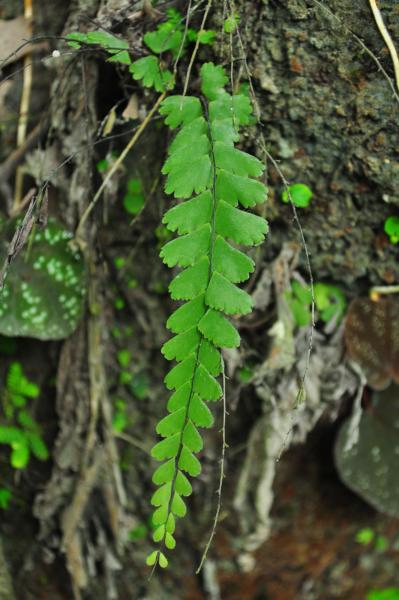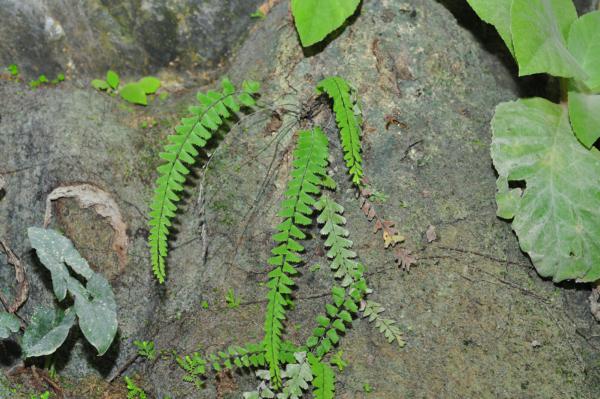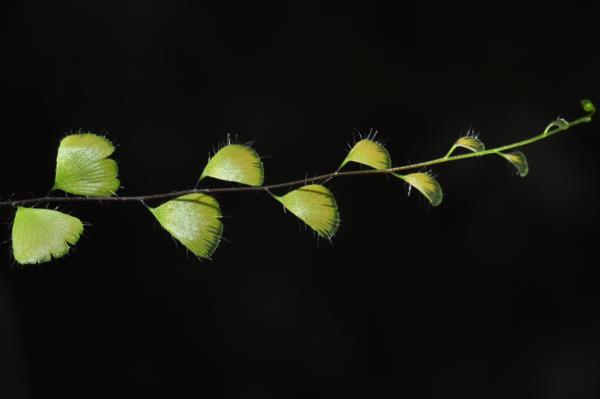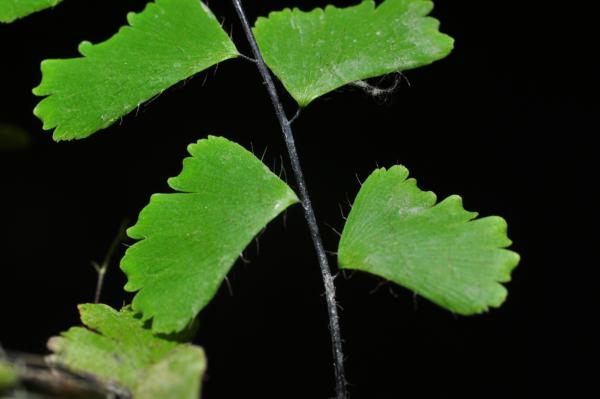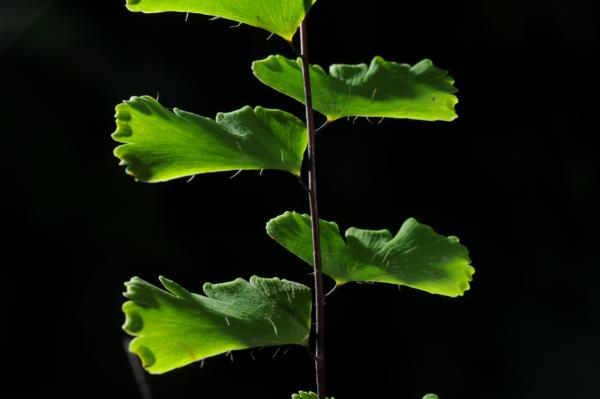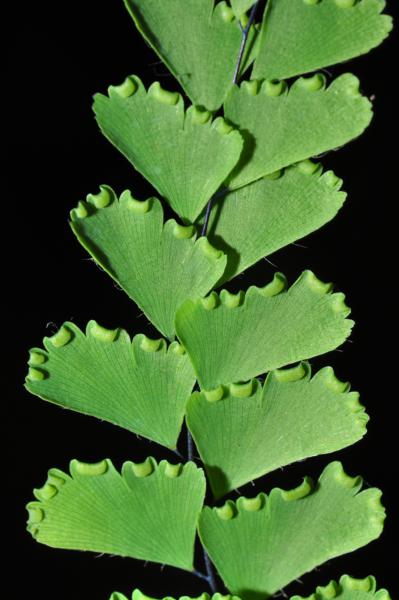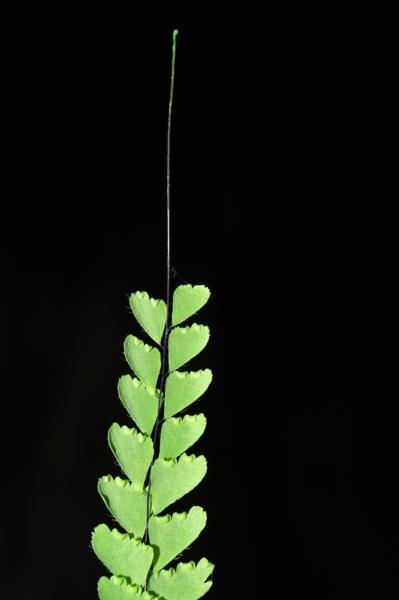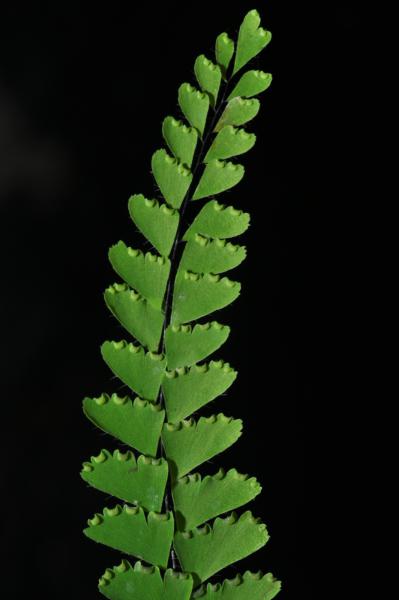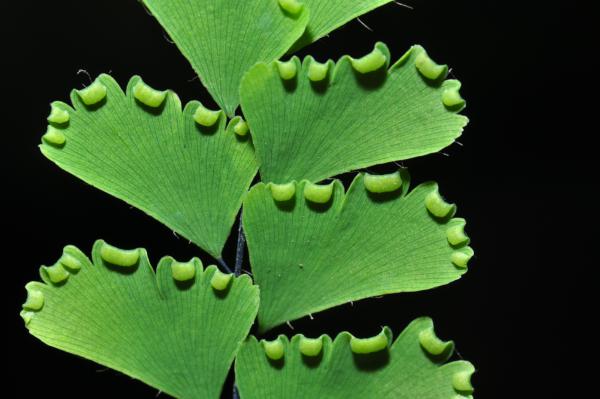
Adiantum siamense Tagawa & K.Iwats.
Etymology
According to Holttum (1954), the botanical name, Adiantum (unwetted) refers to the way in which water-drops run off the surface of the pinnae without wetting them.
Family
Pteridaceae, subfamily Vittarioideae
Nomenclature
Adiantum siamense Tagawa & K.Iwats., Acta Phytotax. Geobot. 25: 20. 1971; Tagawa & K.Iwats., Fl. Thailand 3: 213. 1985; Boonkerd & Pollawatn, Pterid. Thailand: 118. 2000.
Description
Lithophytic. Rhizome short, erect, scaly at apex; scales linear, up to 4 mm long, 0.1–0.2 mm broad, nearly black with paler brownish edge when young. Stipes 1.3–6.5 cm long, dark castaneous to nearly black, polished, glabrous except for the scaly base or with occasional long hair. Laminae narrowly lanceolate, 7–30 by 1.7–3.5 cm (not including prolonged apex); rachis thin, glabrous, sometimes prolonged and proliferous; pinnae 9–32 pairs, with stalks of 1–1.5 mm long; middle ones the largest, straight or curved in dimidiate lower edges, subtruncate in inner edge, forming angles of 60–90° to lower edge, round and lobed at apex, straight or slightly round and lobed at upper edge, 0.7–1.7 by 0.5–1.1 cm; lower ones smaller and more or less deflexed; lobes round or quadrangular, sinus to 1/4 way between upper and lower edges, the middle sinus sometimes to half-way towards costa; softly papyraceous, glaucous beneath, sparsely hairy with 2–4 celled, brown or white, rather setose hairs up to 1.5 mm in length, mainly at margins; veins dense, distinct on upper surface. Sori to seven for each leaflet, one for each lobe, separated from the next by sinus; indusia narrow, up to 2 mm long, 0.5 mm broad.
Distribution in Thailand
PENINSULAR: Nakhon Si Thammarat, Krabi.
Wider Distribution
Endemic to Thailand
Ecology
On limestone cliffs in light shade at low altitudes.
Proposed IUCN Conservation Assessment
Endangered EN B1ab(ii)(iii). This species is confined to karst limestone, a habitat that is often exploited for cement production or degraded due to fire in surrounded farmland or recreational use. Although the exact Extent of Occurrence is unknown it is clearly is less than 5,000 km2, justifying an endangeredcategory.
Voucher specimens - Thailand
Middleton et al. 5386, Nakhon Si Thammarat, Ban Tham (E).
Habit
Habit
Young frond
Upper surface of pinnae
Rachis and pinnae
Pinnae from beneath
Frond with prolonged apex
Frond without prolonged apex
Sori
Site hosted by the Royal Botanic Garden Edinburgh. Content managed by Stuart Lindsay, Gardens by the Bay, Singapore and David Middleton, Singapore Botanic Gardens. Last updated 24 January 2012
